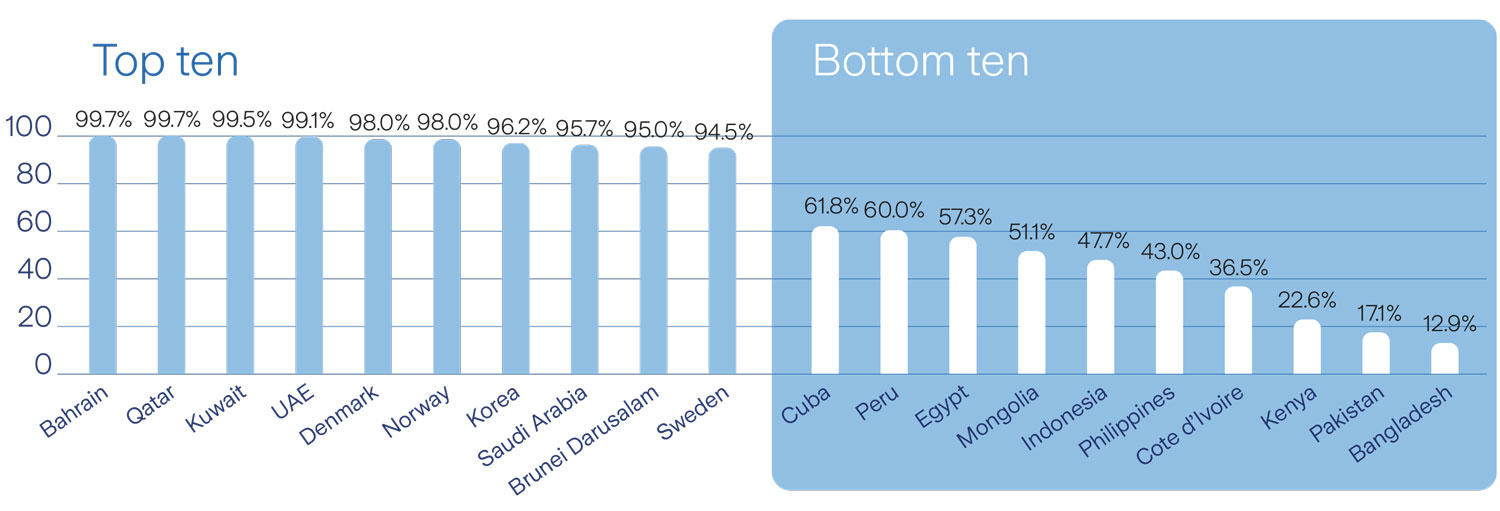How global risks will evolve over the next decade
Global risksArticleJanuary 19, 2021
When you apply a time horizon, the global risks landscape changes dramatically
Time is one aspect that affects our perception of risk and how we identify, assess and prioritise these risks. We must tackle present dangers, be aware of threats around the corner, while keeping an eye on more existential risks in the future.
Recognizing that perceptions on the evolution of global risks vary over a 10-year horizon, the 2021 Global Risks Report asked respondents a new question:
‘When will each risk become a critical threat to the world?’
It asked respondents to rank global risks across three timeframes: 0-2 years, 3-5 years, and 5-10 years. Here are the results:
0-2 years: The immediate risks
Most of these immediate risks are linked directly or have been exacerbated by the Covid-19 pandemic. Infectious diseases, prolonged economic stagnation, and employment and livelihood crises are all in the top five short-term risks.
This should come as no surprise when you recall that in the U.S., for instance, Covid-19 swelled the ranks of unemployed Americans by more than 17 million, from 5.8 million in February to 23.1 million in April 2020. As a result, the U.S. unemployment rate shot up from 3.5% in February – among the lowest on record in the post-World War II era – to 14.7% in April.
Extreme weather is ranked third, sadly the immediate risk of wildfires, windstorms and floods never goes away. But the two other risks in the top five need more explanation: failure of cybersecurity and digital inequality.
Concerns over cybersecurity have heightened as the pandemic has accelerated digital transformation and advancements in technology. And this has also exposed a new inequality: the digital divide.
Widespread lockdowns mean many people are relying on the internet to enable them to work, to access education, health and financial services, and to even interact with others. Yet, hundreds of millions of people around the globe don’t have access to the internet,
According to the World Bank, almost 100% of individuals in high income countries use the internet, whereas that figure in the least developed countries is as low as 13% (see figure 1).
Fig. 1 Internet users by country, top ten and bottom ten (% of population, 2019).
Source: World Bank. Individuals using the Internet (% of population)

3-5 years: The knock-on effects
Economic concerns figure in four out of the top five medium-term risks. While unemployment was the first visible adverse economic impact from Covid-19, the risks in this list are potential knock-on economic effects that we could encounter in the next three to five years.
The immediate economic shocks of the pandemic have been dramatic.
The medium to long term impacts will depend on how much financial markets recover. We may hope for a broader and more sustainable recovery, but it is not evident yet. This creates the risk of reduced economic growth opportunities, or missing pathways to prosperity for the poorest people and nations.
This situation has raised the risks of sovereign debt and financial market corrections, reflected in asset bubble bursts and debt crises in the global economy. The latter due to unprecedented high levels of private and public debt that has built up in the global economy since the financial crisis of 2008.
“Existing imbalances, including high levels of corporate debt and weak financial institutions, exacerbate the situation, potentially leading to rising defaults and delinquencies with sharply lower risk asset prices,” adds Scott.
The growing global dependency on cyber networks and digital technology – including the internet, cloud-based systems, etc – across all aspects of business, government and life mean the consequences of a breakdown of critical physical and digital infrastructure are potentially catastrophic.
The risk of disruption to critical information infrastructure from cyberattacks is also enhanced by the vulnerability of services under strain from high demand, such as energy, financial services and healthcare.
5-10 years: Existential concerns
This list of long-term threats may sound like a catalogue of apocalyptic Hollywood movies, but Covid-19 has taught us that these ‘grey rhino’ risks do exist: obvious global risks that are neglected, despite – in fact, often because of – their size and likelihood. To ignore them would be dangerous.
In 2006, the Global Risks Report sounded the alarm on pandemics and other health-related risks. More recent editions of the report stressed the need for global collaboration in the face of the Ebola crisis, antimicrobial resistance, biological threats, and overstretched health systems, among other topics. It is not the identification of these risks that is the problem, it is the lack of attention to preparing for and mitigating these well-understood global risks.
There are many of them on the global risk landscape, including the deployment of weapons of mass destruction, state collapse and natural resource crises.
The wars in Syria and Yemen and associated humanitarian crises and mass migrations, not to mention the recent six-week conflict in 2020 between Armenia and Azerbaijan over the disputed Nagorno-Karabakh region proves these are all credible and critical long-term threats.
Not only could the Nagorno-Karabakh conflict have destabilized a region on Europe’s doorstep, it could have also endangered Europe’s energy security as the area is criss-crossed by oil and gas pipelines.
The final two long-term risks are biodiversity loss and ecosystem collapse, and adverse outcomes of technological advances.
But these are overshadowed by the planetary crisis of climate change.
With 2020 the warmest year on record, it has increased the likelihood and the negative impacts of risks such as sea-level rise, the frequency and intensity of natural hazards, poor water quality and availability, and the degradation of natural ecosystems and biodiversity. Not to forget the enormous economic, social and political consequences.
For these reasons, climate change is an existential threat that dwarfs Covid-19 and should be a risk we prioritize in the short-, medium- and long-term horizons. Remember, there is no vaccine for the planet’s degradation.




